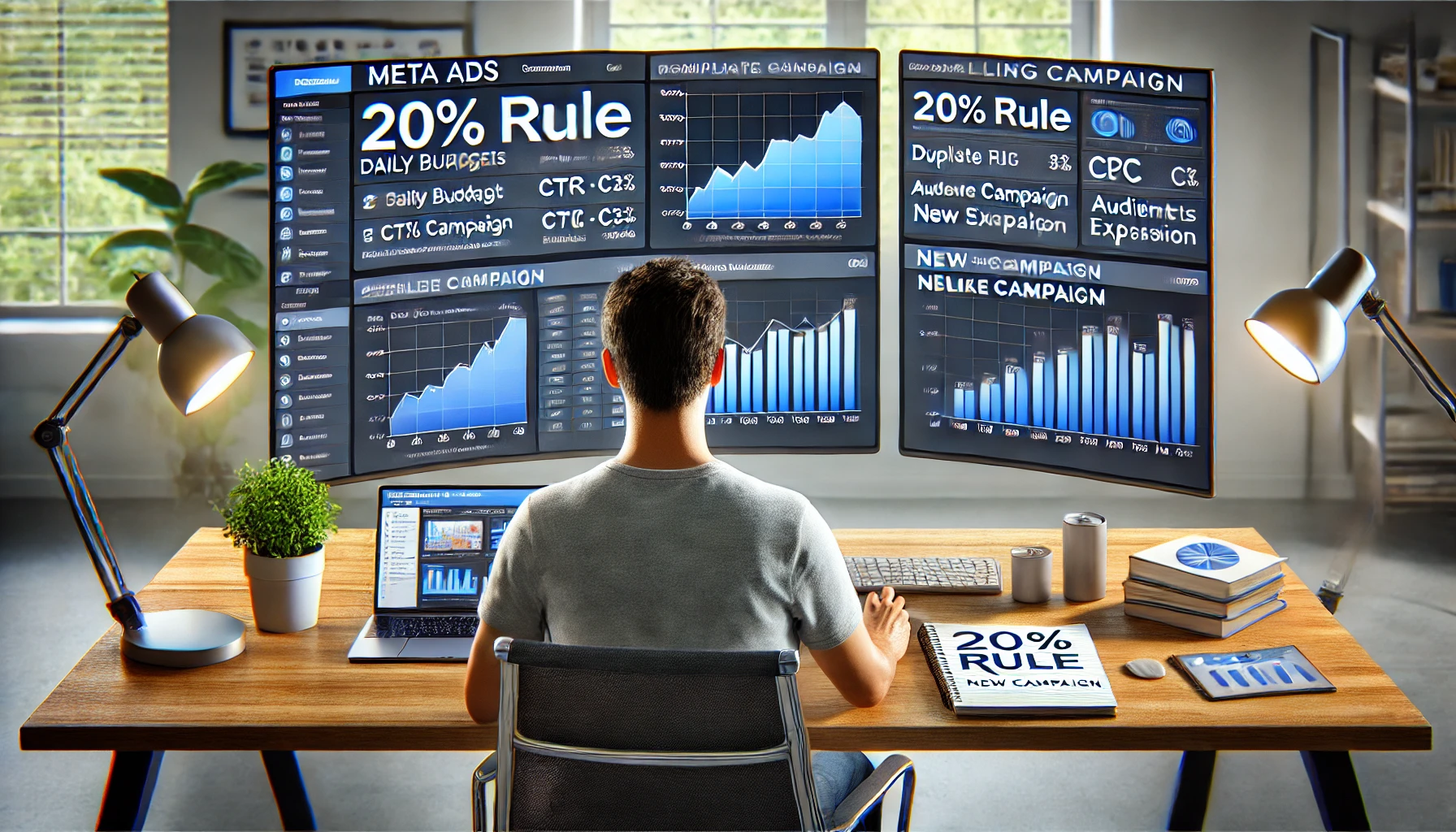You launched a campaign, optimized your ads, and finally hit consistent results. Now it’s time for the next step: scaling.
Scaling a campaign means increasing your results—more leads, more sales, more revenue—without losing the performance you worked so hard to achieve. But if done wrong, scaling can destroy your ROAS, waste your budget, and lead to campaign burnout.
In this article, you’ll learn how to scale your ad campaigns strategically and safely, while keeping control of performance and budget.
What Does It Mean to Scale a Campaign?
Scaling a campaign means increasing its impact—either by raising the ad budget, expanding the audience, or duplicating the campaign—with the goal of getting more conversions without hurting performance.
For example: If you’re spending $100/day and making $400 in sales (ROAS = 4), scaling means increasing that spend to $200 or $300/day while keeping that same or better return.
Make Sure the Campaign Is Ready
Before scaling anything, make sure the campaign is truly stable. You don’t want to scale something that’s only performing well by luck.
Check for:
- At least 3–5 days of consistent results
- Steady ROAS (Return on Ad Spend)
- Low or stable CPC (Cost per Click)
- Creative performance holding strong
If results are still unstable, wait a bit longer before scaling.
Use the 20–30% Rule for Budget Increases
One of the safest ways to scale is called vertical scaling—gradually increasing your existing budget.
Here’s how:
- Increase your daily budget by no more than 20–30% at a time
- Wait 48 to 72 hours before adjusting again
- Monitor your ROAS, CPC, and conversion rates closely
Slow, controlled growth helps maintain campaign momentum without breaking the algorithm’s learning phase.
Duplicate Winning Campaigns (Horizontal Scaling)
Another smart method is horizontal scaling—duplicating your best-performing campaign to test it with new audiences or creatives.
You can duplicate the campaign and change:
- The audience (e.g., different gender, interest, or location)
- The creative (e.g., a new hook or ad format)
- The placement (e.g., from Instagram Feed to Stories)
This allows you to scale safely while continuing to learn what works.
Add Fresh Creatives Before Fatigue Hits
Scaling a campaign increases your audience frequency. If people see the same ad too many times, performance drops.
Avoid that by:
- Testing new versions of top creatives
- Changing your offer presentation
- Using different formats (carousel, video, static images)
Even small tweaks (headline, image, CTA) can extend the life of a campaign and keep results strong.
Expand Your Audience Gradually
If you’ve been targeting a narrow audience, try expanding:
- Widen the age range or location
- Test broader interest categories
- Use lookalike audiences based on past customers
A bigger audience gives you more room to scale without saturating your current one.
Use Automation to Stay in Control
Scaling means more data and more variables to watch. Use platform tools to automate what you can.
Set up:
- Budget rules (e.g., increase budget if conversions go up)
- ROAS alerts (get notified if it drops below a limit)
- Frequency limits (pause ad sets with too much repetition)
Both Meta and Google Ads offer built-in automation options that can save you time and protect your results.
Monitor the Whole Funnel
When scaling, don’t just look at the ads. Make sure your entire funnel can handle the growth.
Track:
- CTR (are people still clicking?)
- CPM (are your costs rising?)
- Frequency (are people getting tired of your ad?)
- Conversion rate (is your landing page still converting?)
If any part of the funnel breaks down, performance will drop—no matter how much you spend.
Final Thoughts: Scaling Is a Strategy, Not a Shortcut
Scaling a winning campaign is one of the most exciting stages of media buying—but it takes patience, structure, and focus.
Don’t rush. Increase budget slowly, test new audiences, rotate creatives, and let your data guide you.
When you scale with intention, you don’t just grow your ads—you grow your business.
